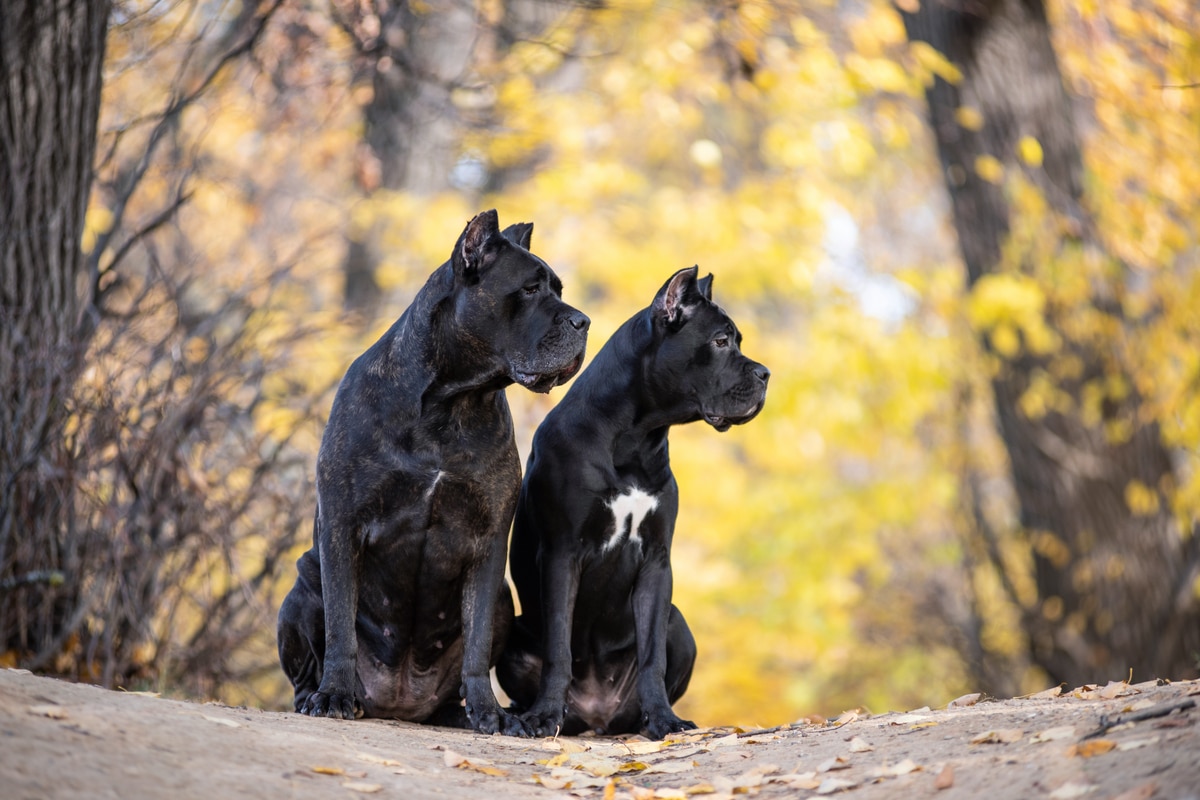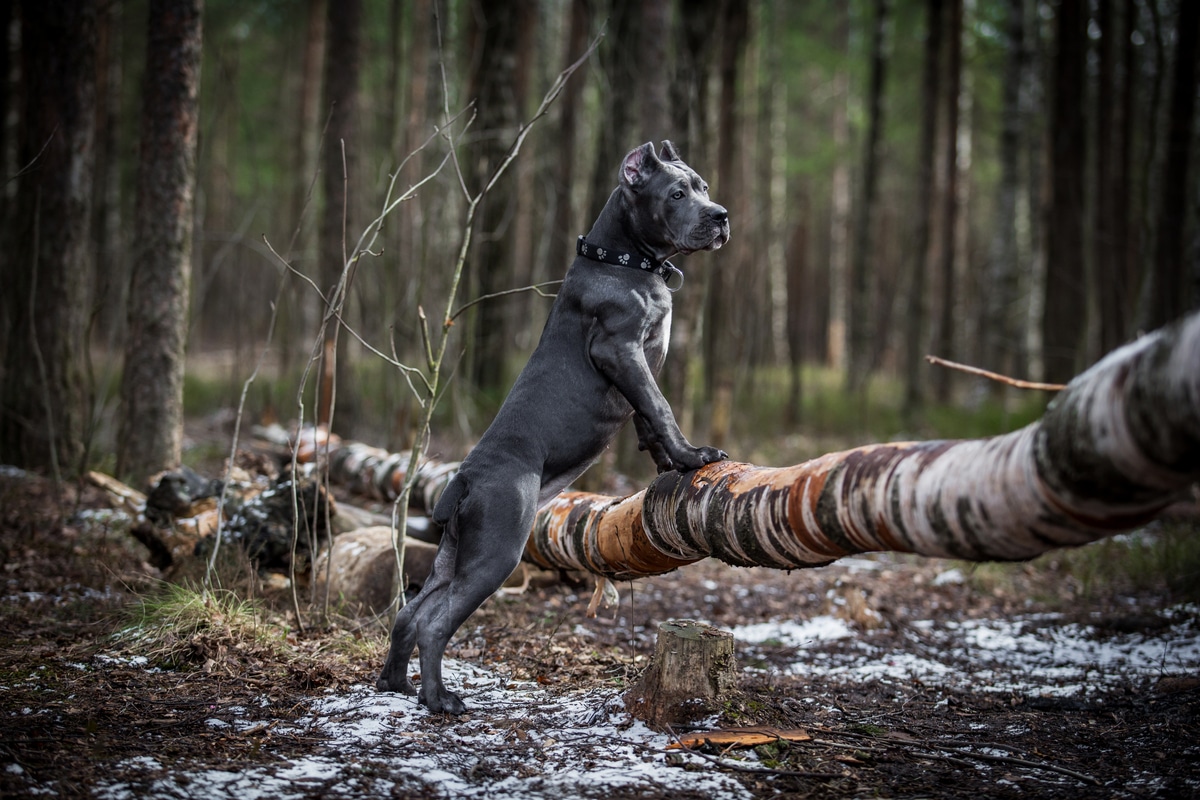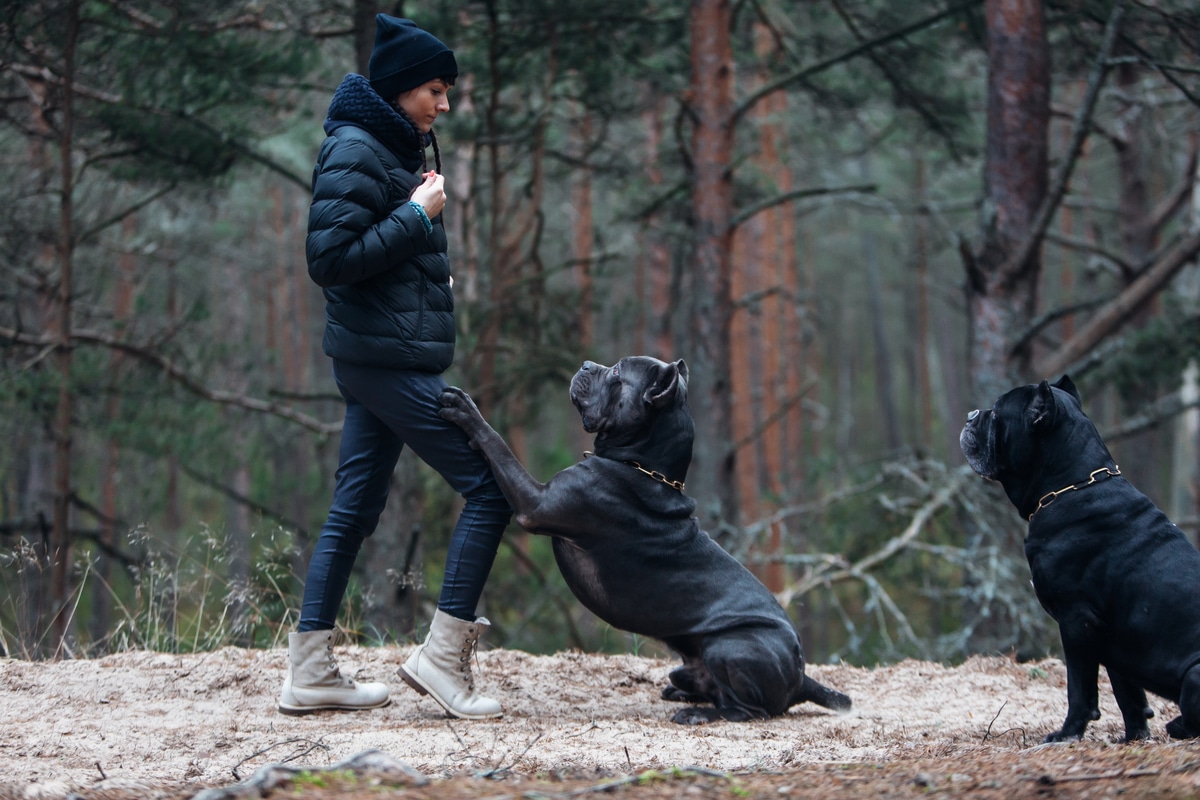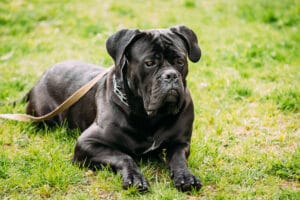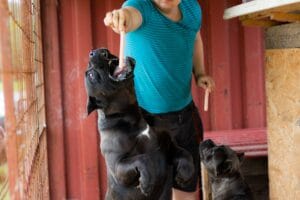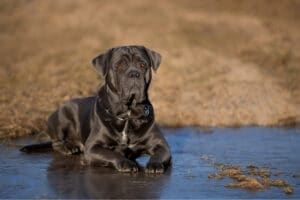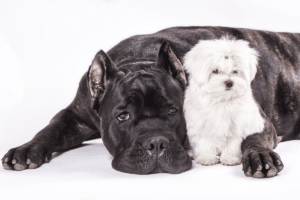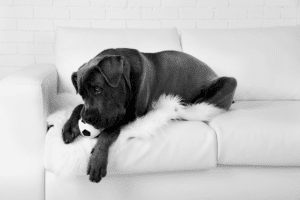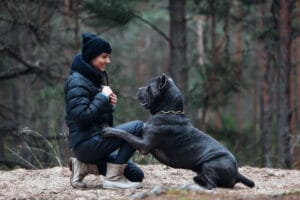For anyone looking for Cane Corso breed information, they have probably heard that they are extremely intelligent and very eager and willing to work. They love having some kind of a task or job to do on a daily basis. This task can be as simple as letting them alert you to the mailman, or as advanced as having them perform trained guard jobs at your side. They are also extremely affectionate towards their human family and will go to the ends of the earth to protect them.
Aggression and Intimidating Looks
Even though Cane Corso looks intimidating and may terrify some individuals by their looks alone, they are not aggressive dogs by nature. In fact, many Cane Corso owners have said their dogs are extremely loving towards both familiar individuals as well as strangers and would rather lick you to death than do any harm whatsoever.
The breed is extremely loyal to their family, but proper socialization from a very early age will ensure your Cane Corso is also tolerant and accepting of strangers as well. Cane Corso can potentially become dangerous if they are left to their own devices and never given proper socialization or training, so this should always be your first priority when bringing home a new puppy.
Preventing Boredom
Due to their high level of intelligence, boredom is something every Cane Corso owner needs to be aware of. A bored dog can be a destructive dog. Cane Corso will deal with their boredom by digging, chewing, howling, or getting into areas of your home or yard that they should not have access to.
This is not restricted to just puppies either, in fact, adult Cane Corso may be even more prone to boredom than younger dogs. While the younger dogs may be spending most of their time sleeping, older dogs that have a more developed brain and body crave having something to do to stimulate their mind.
Ensuring Proper Supervision
Leaving your Cane Corso unsupervised and to his own devices can spell disaster in some cases, especially if that unsupervised time is extended. While this is normally more of a problem with puppies, especially those that are teething or going through the “put everything in my mouth” phase, older dogs can also develop unwanted behaviours when left unsupervised.
If you must leave your Cane Corso unsupervised, such as while you are at work or school, ensuring your dog has a safe and secure crate is a good option. This also provides a secure area for your dog to call his own and will help relieve stress when family visit for the holidays or during loud thunderstorms.
Being Around Children
Since a Cane Corso can reach 120 pounds or more, having them as a family pet around small children may seem like a bad idea. However, many Cane Corso owners have said their dogs are extremely delicate and very protective of their children, even toddlers. It will all come down to how the Cane Corso is socialized within that family.
In spite of their large size, Cane Corso can be extremely delicate and very tolerant of abuse from children. Tugging on ears, yanking tails, or climbing on a relaxing Cane Corso are all taken in stride from a well socialized and disciplined Cane Corso. In fact, once your Cane Corso has realized this small human is part of his pack, he will protect that child with his life if needed.
Bring Around Other Pets
While many Cane Corso that comes from strong working lines do have a high prey drive, there are many other bloodlines that have moved away from the working focus and are bred for pure companionship. These Cane Corso are extremely well adjusted around other family pets, including cats, birds, rabbits and other small animals.
However, if your Cane Corso comes from very strong working lines, or has been used for hunting or prey driven tasks, he may not be a good choice to have around small animals. Since all Cane Corso are individuals, it can come down to each dog as to how it may react around other pets. Always introduce your puppy to other pets in a slow and very supervised manner to let them know this animal is a part of the family too.

